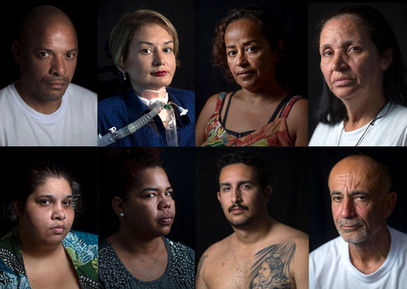Leandro Monteiro, father of Vanessa, 10 years old, killed by a stray bullet in July 2017 during an interview for AFP, on July 27, 2017. Leandro was the first interview of the the project "Balas Perdidas". The most brutal face of the economically collapsed city of Rio is reflected in the growing number of victims of stray bullets, the product of clashes between police and traffickers. AFP's "Stray bullets" project tells some of the victims' stories.
Felipe Amaral, 34, a policeman, and his wife Erica Amaral, 34, who is a Rio government employee, pose for a portrait with their daughter photo in the background in Rio de Janeiro, Brazil, on August 15, 2017. His daughter Sofia Lara, 02, was shot dead during a family dinner at a popular restaurant on January 21, 2017. Their daughter was in the play area while they ate. A police car chasing a suspect drove past and they heard a single shot. When they ran over to the playground area they found their daughter lying covered in blood. The Amarals rushed Sofia to hospital but she was already dead.










